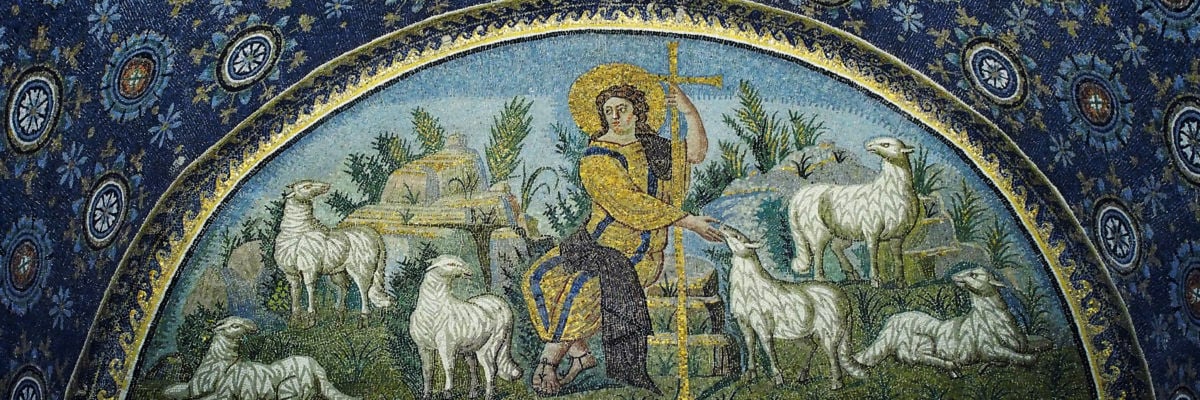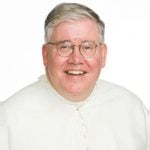
Homily for the Fourth Sunday of Easter, 2021
Jesus said:
“I am the good shepherd.
A good shepherd lays down his life for the sheep.
A hired man, who is not a shepherd
and whose sheep are not his own,
sees a wolf coming and leaves the sheep and runs away,
and the wolf catches and scatters them.
This is because he works for pay and has no concern for the sheep.
I am the good shepherd,
and I know mine and mine know me,
just as the Father knows me and I know the Father;
and I will lay down my life for the sheep.
I have other sheep that do not belong to this fold.
These also I must lead, and they will hear my voice,
and there will be one flock, one shepherd.
This is why the Father loves me,
because I lay down my life in order to take it up again.
No one takes it from me, but I lay it down on my own.
I have power to lay it down, and power to take it up again.
This command I have received from my Father.”-John 10:11-18
Who are the “other sheep that do not belong to this fold,” who will be led by Christ, as they hear his voice? Usually, they are said to be the gentiles who are not of the flock of Israel, who will be led by Christ not in his historical life but in his apostolic ministers. Jesus himself said that he came only for “the lost sheep of the house of Israel.”
But as true as this is, there is another meaning.
Very often, perhaps more than we realize, the earliest Christian art provides a key to the meaning of Sacred Scripture. Today’s Gospel and today’s observance of what we call “Good Shepherd Sunday” are clear examples of this.
What are the earliest images of the Lord? The image of the Good Shepherd. And where are these found? In the early catacombs of Rome, like the catacombs of Calixtus, Priscilla, and Domitilla. And why is this particular image, of all possible ones found there?
We can find the answer when take a look at these words of blessing from the epistle to the Hebrews:
Now may the God of peace, who through the blood of the eternal covenant brought back from the dead our Lord Jesus, that great Shepherd of the sheep, equip you to do his will. And may he accomplish in us what is pleasing in his sight through Jesus Christ, to whom be glory forever and ever. Amen (13:20-21).
Remember, when Christ rises from the dead he rises as a triumphant victor, bringing with him his sheep and the spoils of his fight with the prowling lion—the devil, the old master of the domain of death. This is why the apostle calls Christ as he is rising from the dead, “that great Shepherd of the sheep.” This is the Easter theme par excellence.
Catacombs are places where the bodies of Christians await their own resurrection in Christ, as their souls are gathered to him in the vision of heaven. And so when Our Lord spoke of “this flock” he meant the living, and when he spoke of the “other sheep” who are of another flock (it was not uncommon to own several flocks), he meant the dead.
Now, Our Lord came to die. Another way of saying this is that he came to join the dead who were enduring the dire sentence passed on Adam and his descendants. And why? Because he alone of all the human race was absolutely free of the sentence of death. His death was voluntary. It was a mission of mercy to all the saved from Adam and Eve until the Good Thief, to free them from the sentence of death, giving them the vision of his blessed face and the future resurrection.
We cannot fully comprehend the zealous love whereby the Lord sought out death in order to enter that horrible sheepfold and let his sheep out to graze in the pastures of eternal happiness! Remember that among them was the Savior’s own earthly father, St. Joseph, patron of happy death.
But what is more, we can join the Lord in this love for the departed whom we remember at each Holy Mass where the body and blood of the Lord, now risen, is offered “for the living and the dead.” Prayer, sacrifices, and deeds of mercy for the dead can make of us all fellow Good Shepherds with the “Great Shepherd of the Flock,” bringing them into the fullness of life.
Image credit: Petar Milošević



